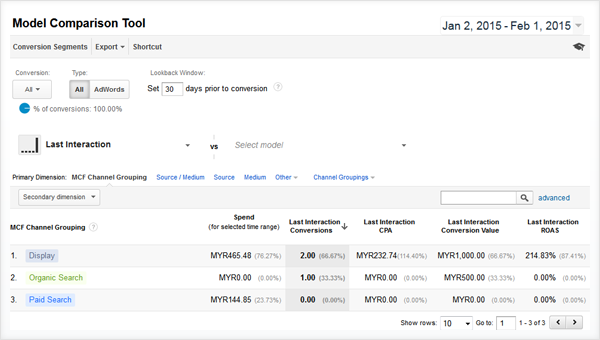Your Google Analytics
Partner in Asia Pacific
We are in the business of enabling actionable online
insights throughout this region

You run a site with a specific goal such as sign-ups, transactions, etc... For example, you are an ecommerce site that measures success by customer purchases and revenue. Visitors to your website arrive via many different channels including paid advertising, organic search, social media, direct traffic & referrals.
You already know how to do basic channel performance analysis so you know how each traffic channel contributes to your ecommerce conversion rate and revenue. You have also figured out how to analyse using Multi-Channel Funnels (MCF) to determine the true assisted conversion value of each traffic channel that contributes towards your visitor’s multi-session conversion paths.
Now, you want to obtain a set value that you can assign to each traffic source that can be used for performance comparison month-to-month or across different channels and marketing campaigns.
 |
Attribution Modelling in Google AnalyticsEssentially, you want to “attribute” a value to the traffic source or channel that can be quantified, compared and improved against. To do so, you need to fit in an attribution model to your conversion data. Simply put, the attribution model assigns value to each step along the multi-session conversion path based on a mathematical formula. |
 |
Setup Attribution ModellingYou need to configure your website goals and/or enable ecommerce tracking for your website. Once this is setup, Google Analytics will automatically compute your attribution reports under Conversions > Attribution. If you are subscribed to Google Analytics Premium, the Data-driven attribution model is automatically built and calculated provided you meet the minimum number of conversion data. Soon, you will also gain access to two new powerful tools for ROI Analysis and the Model Explorer. |
Subscribe to our mailing list for the latest updates and quarterly insights from our research team.
Subscribe Now